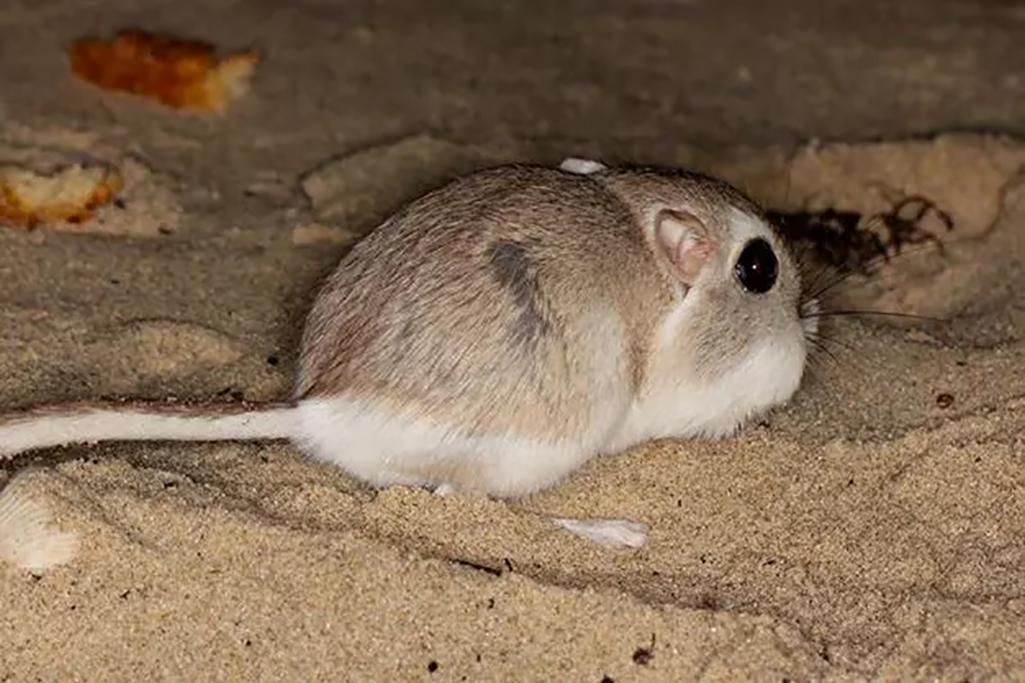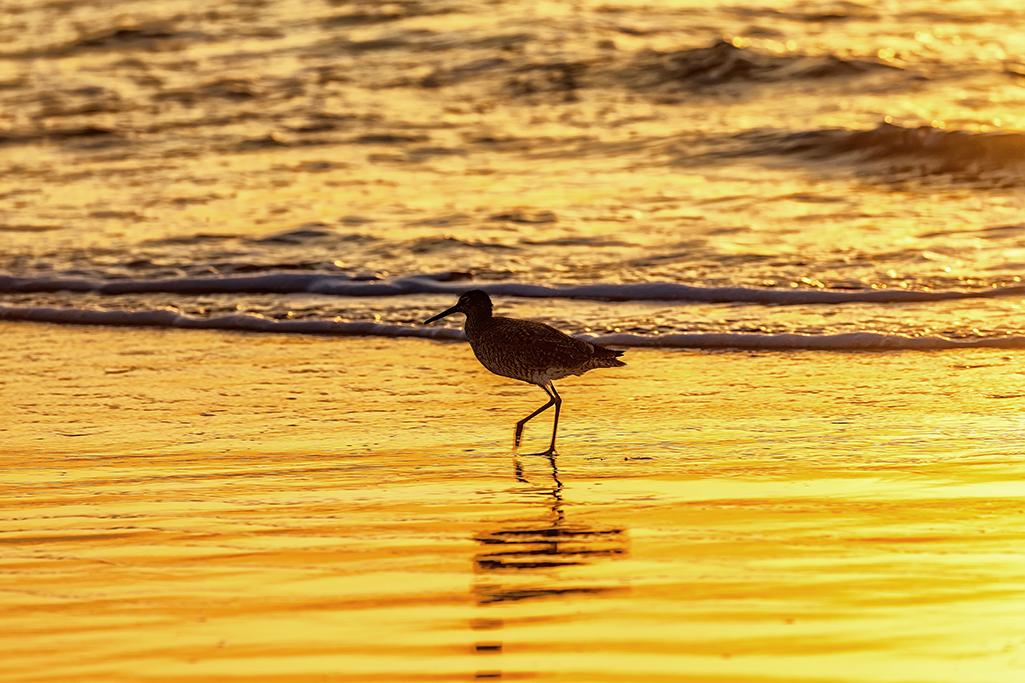Padre Island National Seashore in Texas is home to many animals, including the five species of sea turtles. You might spy a coyote in the grassy dunes, or a ghost crab scuttling away from your feet. It’s a birder’s (and bird photographer’s) paradise. You might also encounter some scary critters, like the giant centipede.

During a moonlight beach stroll, you might come across the adorable nocturnal Padre Island kangaroo rat, Padre Island National Seashore / Kyle Christensen via NPS
Don’t be surprised if you happen to see a coyote on the grassy dunes as you walk along the beaches. They are a commonly seen mammal, as are ground squirrels and deer. Not as frequently sighted but still around are opossums, raccoons, jackrabbits, and even badgers and bobcats. If you walk along the beach during the late evening and at night, there’s the possibility of spying the adorable nocturnal Padre Island kangaroo rat. This little rodent rarely drinks water, receiving most of its moisture from food.
While beachcombing at this national seashore, you might detect movement from the corner of your eye. That would probably be a ghost crab poking its stalked eyes out from its sandy burrow to give you the once-over. Ghost crabs are the most common of the 10 crab species roaming the beaches here. The name comes from their pale, ghostly coloration which blends perfectly with the beach’s light sand. Like the Padre Island kangaroo rat, ghost crabs are nocturnal, so take along a flashlight during your moonlight beach stroll.

Ghost crabs are great at blending in with its surroundings, Padre Island National Seashore / Rebecca Latson
Ghost crab fun facts: They can scuttle along up to a speed of 10 mph (16.1 kph). Their stalked eyes are able to see 360 degrees simultaneously; however, they are unable to see directly overhead. Ghost crabs will hibernate in their burrows during the winter, “holding their breath” for up to six weeks by storing oxygen in special sacs near their gills.
Padre Island National Seashore is a birder’s (and bird photographer’s) paradise. There are over 380 species of birds calling this place home during a part of, or all year round. With your binoculars or telephoto lens/telephoto setting, you can view brown pelicans, skimmers, willets, ducks, egrets, sanderlings, cormorants, gulls, terns, caracaras, and a multitude of other winged wildlife.

Brown pelicans fishing for breakfast in the Gulf of Mexico at Padre Island National Seashore / Rebecca Latson

A couple of sandwich terns strolling along the beach, Padre Island National Seashore / Rebecca Latson

A willet's morning breakfast run, Padre Island National Seashore / Rebecca Latson
In addition to the beaches, there are prairie and marsh venues from which to view birds. The park even erected a bird blind with nine cutouts at various heights for birders and photographers at one of the freshwater ponds dotting the landscape.

A birding blind in front of one of the park's freshwater ponds, Padre Island National Seashore / Rebecca Latson
Invertebrates are part of the wildlife spectrum, too, at this national seashore. This includes spiders, scorpions, and centipedes. A common species of centipede you might spot during your visit is the giant centipede (Scolopendra heros), with a length between 6.5 inches to 8 inches (170 mm – 200 mm). Don’t try to pick them up – they are venomous, and their bite is quite painful, causing anything from nausea, to localized skin necrosis, to kidney failure, and even heart attack in humans.

A red saddlebag dragonfly, Padre Island National Seashore / NPS
You’ll also see beautiful insects like the red-saddlebag dragonfly flitting around. Believe it or not, dragonflies – or rather, dragonfly larvae - are crucial to understanding the spread of mercury, a highly potent neurotoxin affecting both humans and wildlife. In 2016, the National Park Service and several partners launched the Dragonfly Mercury Project to measure mercury in dragonfly larvae. From this information, scientists – including those at Padre Island National Seashore – deduced the occurrence and frequency of mercury contamination to determine potential risk for other living organisms and their ecosystems.
In addition to the pretty insects, there is the possibility of encountering some pretty pesky insects, like ticks and mites, during a walk through the national seashore’s grasslands. It’s a good idea to spray your clothing with permethrin to repel ticks, and wear light clothing for easier tick detection. Sawyer-brand permethrin insect repellent for clothing is sold not only on Amazon but in many sporting goods stores and comes in easy-to-apply spray bottles with enough liquid to coat two or three pairs of pants and shirts.
Last but definitely not least are the sea turtles nesting and/or foraging at Padre Island National Seashore. These are one of the most iconic and popular animals found within this national seashore’s landscape.

A nacho-sized Kemp's ridley sea turtle hatchling, Padre Island National Seashore / Rebecca Latson
There are five species of sea turtle found in the Gulf of Mexico, all relying in some way or another on this national seashore in Texas.
According to park staff:
Kemp's ridley sea turtles nest here more than at any other location in the United States. Juvenile green sea turtles live in the waters here year-round and adults nest on Padre Island in low numbers. Loggerhead sea turtles also nest in the park in low numbers and forage offshore. Leatherback sea turtles travel through the Gulf and historically nested here. Hawksbill sea turtles also travel through the area, finding food and rest along the way. These species are all federally listed as either endangered or threatened. Padre Island National Seashore is the only location in Texas where nests from all five of these species have been found.
Our Division of Sea Turtle Science and Recovery, the only division of its kind in the National Park Service, works to monitor and protect these animals. In spring and summer, nesting turtles are protected, examined, and tagged. A few are tracked using satellite telemetry. Nests are moved to protected areas and monitored until they hatch. When possible, the public is invited to watch newly hatched sea turtles make their way to the Gulf. Thousands of visitors and numerous media attend these public hatchling releases each year.

A Kemp's ridley sea turtle hatchling release on Malaquite Beach at Padre Island National Seashore / Rebecca Latson





